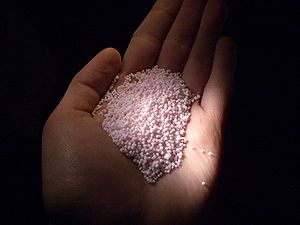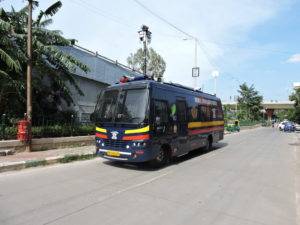Introduction
The terror strike in Norway, on 22 July, consisted of two connected and sequential attacks: a car bomb explosion in Oslo, next to the Norwegian Prime Minister’s offices, and a mass shooting spree at an island, Utøya, lying less than an hour away from Oslo. In total the strike resulted in 77 fatalities.
The strike brought to focus two aspects of the changing face of urban terrorism: the activities or depredations of individuals or small groups outside the formal command structure of terrorist organisations, the so-called lone-wolf terrorists; and, the use of everyday material (in this case, ammonium nitrate, a high-nitrogen fertilizer) in making explosive charges. Neither of this is new, it is just that incidents featuring one or both of the above are increasing in frequency.
This brief looks at the implications of the changing face of urban terrorism, for Homeland Security agencies.
Fertilizer or Explosive?
The IDing of ammonium nitrate [NH4NO3] in the July 13 serial blasts, in Mumbai, this year, brought to the fore the issue of regulating this fertilizer in India. There has been talk of a blanket ban on the fertilizer; but that is not practical, given the widespread use of the compound in farming. Instead the Government of India has banned the open sale of any substance with more than 45% ammonium nitrate, under Section 17 of the Explosives Act, 1884.

Figure 1: Ammonium nitrate-fuel oil (ANFO) explosive
Credit: http://en.wikipedia.org/wiki/ANFO
However, given the difficulty involved in enforcing such a ban, there needs to be a parallel system of tagging and tracking the material, for reasons of deterrence and forensics. There are two facets to the above activities:
- Tagging and Tracking Ammonium Nitrate:
Law enforcement agencies in the USA are looking at adding taggants to ammonium nitrate, allowing an investigating agency to track the source of the ammonium nitrate used in a terrorist act. The issue facing manufacturers, of ammonium nitrate, is to identify taggants that do not affect the efficacy of the fertilizer and which do not add substantially to the cost. Sales tracking of the fertilizer is another means of identifying potential misuse of the substance. Sales tracking involves recording the details of the purchaser of the material at all stages of the supply chain. The purchaser details needs to be backed up with an authenticated ID-proof. - Detecting Ammonium Nitrate:
Detection of ammonium nitrate is possible using an Explosives Trace Detector. Details of this technology were carried in one of the March 2011 Homeland Security Tech Briefs – Explosives Trace Detectors for Homeland Security Applications.
The issue with using an ETD for detecting ammonium nitrate in the field is the high probability of false positives, given the widespread use of ammonium nitrate as a fertilizer and for other applications. However, whenever there is an intelligence threat of an imminent terror attack, it does make sense to station ETDs at sensitive locations.
Lone-Wolf Terrorism
The second aspect of the changing face of urban terrorism is the decentralized nature of the activities of terrorists. No longer does a central command structure plan and execute or facilitate terror acts. The central command structure mostly serves as a source for ideological indoctrination and conditioning, and for keeping up the morale of the adherents of the ideology. The widespread reach of the Internet and the increasing success of states in curtailing the freedom of terrorist command structures, has accelerated this shift to independent action.
The perpetrator of a terrorist act may be a single individual feeding on imagined or actual traumas, or a group of like-minded individuals who are in close physical contact. In both cases, the opportunity to infiltrate is almost non-existent. The Western approach to this development has been to keep a close tab on alerts generated by systems such as sales tracking of ammonium nitrate-type materials, and on gathering intelligence through social networking and field agents.
In the case of the Norway terror strike, the perpetrator’s name was flagged off thanks to the sales tracking mechanism implemented throughout the European Union, for purchasers of certain types of chemicals, but the Norwegian Intelligence did not act on the alert as it deemed the individual flagged off as not requiring further investigation.
Whilst not advocating a replacement of field-intelligence methods and practices with Internet-centric intelligence-gathering, there is a case to be made for Indian law-enforcement agencies taking advantage of the information dissemination revolution engendered by the Internet for their purposes.
Social Networking Sites and Tools
A May 2011 brief – Using Social Networking Sites and Tools for Intelligence-gathering – discusses the benefits and limitations of Internet-centric intelligence-gathering. It is pertinent to note that the limitations of the approach, as mentioned in the brief, pertain to scenarios where the potential perpetrator is a lone-wolf or is a group with very disciplined on-line communications; or pertains to geographies where Internet penetration is very low. India would qualify on the second count, while not being at so much of a disadvantage on the first count. Howsoever one looks at it, though, an intelligence-gathering presence on the Internet provides additional information or leads to intelligence gathered through traditional means. In the case of the Norway terror attack, the perpetrator had submitted posts on far-right websites. Perhaps if this information was available to Norwegian Intelligence, they may not have decided to treat the sales tracking alert as not being of relevance.
Honey-pot Websites
Law-enforcement agencies can go a step further and create and develop websites that attract a particular profile of visitors; one deemed as being of threat to the state. Quite like real-life sting operations, where a potential perpetrator is lured into revealing its hand to a supposed co-conspirator, or like a honey-pot computer set up to lure hackers; a honey-pot website creates an environment that attracts the more extremist profiles of the targeted ideology, towards the objective of identifying and tracking those individuals that reveal the intention to walk the talk. An operation such as creating a honey-pot website is time-consuming and resource-intensive, and needs to be undertaken after a detailed analysis of the problem, a clear-cut definition of the objectives, and thorough planning of the execution of the operation. Results may not be forthcoming immediately; but, if done right, such a site will turn out to be a treasure-trove of information after a year or so.
The dangers of such an operation are similar to that posed by a badly designed vaccine:
- that in attracting a certain profile of users, the website may actually end up converting more adherents to the ideology that is being tracked
- or, that the personnel maintaining the site may themselves be converted over to the cause of the ideology being tracked, thereby turning renegades.
Conclusion
Changing environments require adaptations that allow survival among the changed circumstances; and so it is for homeland security responses to the changing face of urban terrorism. India is not as Internet-penetrated as the developed world, and neither has lone-wolf terrorist acts taken place.
However, being forewarned is being forearmed, and Indian homeland security agencies would be well advised to start adopting techniques now commonly in use, in the West, to track and target lone-wolf terrorism and the use of everyday material for explosive devices.



